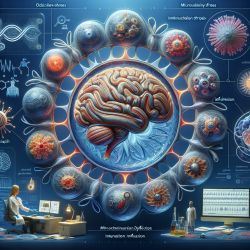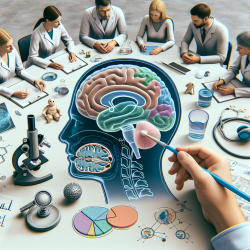Introduction
Autism Spectrum Disorders (ASD) have long been viewed primarily through the lens of behavioral observations. However, emerging research indicates that ASD is also characterized by physiological abnormalities, particularly in the brain. A recent review article, Evidence linking oxidative stress, mitochondrial dysfunction, and inflammation in the brain of individuals with autism, highlights the biological underpinnings of autism. This blog aims to guide practitioners in leveraging these findings to enhance their therapeutic approaches.
Key Findings from the Research
The review article identifies three critical physiological abnormalities in the brains of individuals with ASD:
- Oxidative Stress: An imbalance between free radicals and antioxidants in the body, leading to cellular damage.
- Mitochondrial Dysfunction: Impairment in the mitochondria's ability to produce energy, affecting cellular function.
- Inflammation: An immune response that can become chronic, potentially damaging brain tissues.
These abnormalities are not only present in peripheral tissues like blood and urine but also in brain regions associated with speech, social behavior, and sensory processing.
Implications for Practitioners
Understanding the biological aspects of ASD can significantly impact therapeutic strategies. Here are some ways practitioners can apply this knowledge:
- Holistic Assessment: Consider physiological assessments alongside behavioral evaluations to gain a comprehensive understanding of each individual's condition.
- Targeted Interventions: Develop interventions that address oxidative stress and mitochondrial dysfunction, potentially through dietary changes, supplements, or medications.
- Collaborative Care: Work with healthcare providers to monitor and manage inflammation and other physiological factors that may exacerbate ASD symptoms.
Encouraging Further Research
While current findings are promising, further research is essential to fully understand the biological mechanisms of ASD. Practitioners are encouraged to stay informed about new developments and consider participating in research studies to contribute to the growing body of knowledge.
Conclusion
By integrating the biological insights from recent research into their practice, therapists and educators can enhance their ability to support individuals with ASD. This approach not only addresses the symptoms but also the underlying causes, paving the way for more effective and personalized interventions.
To read the original research paper, please follow this link: Evidence linking oxidative stress, mitochondrial dysfunction, and inflammation in the brain of individuals with autism.










